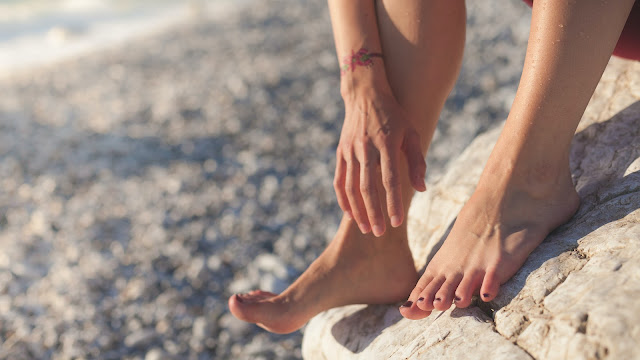In this day and age, it's easy to feel disconnected from the natural world around us. However, the simple act of grounding, also known as earthing, offers a powerful way to reconnect with the Earth and reap numerous health benefits.
Grounding involves physically connecting with the Earth's electrical energy, allowing our bodies to balance and restore themselves.
In this post we'll explore the concept of grounding, delve into its scientifically supported benefits and discuss various methods to ground oneself outdoors, such as grass, trees, water and sand.
We'll also touch upon indoor grounding tools, like grounding mats, to help you incorporate this practice into your daily routine.
The Science Behind Grounding
Scientific research has provided substantial evidence to support the benefits of grounding. When we make direct contact with the Earth, whether through bare feet, hands or any part of our body, we allow the transfer of negatively charged free electrons from the Earth's surface into our bodies.
This process is believed to neutralise positively charged free radicals in the body, which are associated with inflammation and various diseases.
Several studies have shown the positive effects of grounding on our health. For instance, a study published in the Journal of Environmental and Public Health found that grounding can improve sleep quality, reduce pain and decrease stress levels.
The participants who engaged in grounding reported feeling more relaxed, experiencing less pain and enjoying better sleep compared to those who did not ground themselves.
Another study published in the Journal of Alternative and Complementary Medicine discovered that grounding can have a positive impact on heart health. The researchers found that grounding significantly reduced blood viscosity and improved heart rate variability, indicating better cardiovascular function.
Grounding has also been shown to have anti-inflammatory effects, which can potentially alleviate chronic pain and promote overall wellbeing, and can help reduce Delayed Onset Muscle Soreness (DOMS) after exercise [source].
Outdoor Grounding Techniques
Grounding outdoors involves connecting with the Earth's surface directly. Here are a few popular ways to ground yourself outside:
Indoor Grounding Tools
While outdoor grounding is ideal, it may not always be feasible due to weather conditions or other limitations. In such cases, indoor grounding tools can be an excellent alternative.
One popular tool is a grounding mat, which is typically made of conductive materials like carbon or silver. These mats can be placed on the floor or used as a desk mat while working. When connected to a grounding outlet or a grounding rod placed in the Earth, the mat allows the flow of electrons into the body, providing the same benefits as outdoor grounding.
Conclusion
Grounding, or earthing, offers a simple yet profound way to reconnect with nature and enhance our overall wellbeing. Scientific evidence supports the benefits of grounding, including improved sleep, reduced pain and inflammation, and enhanced cardiovascular health.
Incorporating grounding into our daily lives can have a transformative impact on our health and wellbeing. By taking the time to connect with the Earth's energy, we can restore balance, reduce stress and promote optimal functioning of our body systems.
So the next time you feel overwhelmed or disconnected, take a moment to ground yourself. Find a patch of grass, walk barefoot on the beach or simply sit under a tree. Embrace the healing power of nature and let the Earth restore your vitality.
Remember, grounding is not just a physical practice but can also be a spiritual and emotional journey, reconnecting us with the essence of who we are as beings intertwined with the natural world.
Take a step towards grounding today and experience the profound benefits it has to offer. Your mind, body, and spirit will thank you as you embark on this transformative journey of reconnection with the Earth.
If you liked this post, you might also enjoy: Get Outside: The Healing Power of Nature
